The idea behind the Oracle Arms 2311 pistol is one that caught my attention immediately — a pistol that incorporates 2011-style features, but uses Sig P320-pattern magazines and is designed to be ambidextrous and modular. We get a 1911-style trigger that’s better than almost anything on a striker-fired gun, a customizable grip module that includes built-in support-thumb rests, and it takes common, relatively affordable Sig magazines.
This is a pistol that isn’t trying to be the next Glock. Rather, it targets a crowd that favors high-performance pistols and appreciates both the practical and finer points of the shooting experience. They are tight, well-finished, bad-ass-looking pistols. Oracle Arms (now Oracle Defense) debuted their 2311 pistols in early 2023, and like many other eager shooters, it took me a while to get my hands on one. I quickly put the freshly minted Oracle Arms 2311 Compact Pro to work — could this be one of the top choices for a concealed-carry gun?
- Caliber: 9mm
- Capacity: 15 +1
- Magazine Material: Steel
- Dimensions: 5 inches (H) x 7.75 inches (L) x 1.378 inches (W)
- Weight: 1 pounds, 12 ounces (weighed with empty magazine, no optic)
- Frame: 7075 aluminum
- Slide: Steel, black DLC-type coating
- Grip: OA Gray polymer
- Barrel: 4.25-inch, ported
- Sights: Night Fision tritium night sights (suppressor height front sight included
- Optic ready: Yes, includes four optic plates (RMR, DDP, Holosun K, and RMSc compatible)
- Trigger: Single-action, flat shoe, 4 pounds 8 ounces (measured)
- Safety: Ambidextrous thumb safety
- Price: $2,349
Key Features
- 1911-style trigger, hammer, and safety
- Fully ambidextrous
- Comes with five Sig P320-pattern magazines
- Magwells are interchangeable to allow 15- and 17-round magazines to fit flush
- Barrel and slide are ported (non-ported model available)
- Grip module is designed to be stippled and has integral gas-pedal-style thumb rests
- Multiple optic plates included
- 3-slot accessory rail on dust cover
Review Highlights
- Ultra flat-shooting and controllable
- Good trigger
- Solid value for the package — most manufacturers don’t include five magazines
- P320 magazine compatibility is a big plus
- Reliability issues with some ammo
- Accuracy: 1.945-inch average 5-shot group size at 15 yards (Three types of ammo)
Oracle Arms 2311 vs. 2011
The 2011-style platform, a modified take on the classic 1911 that’s adapted to use double-stack 9mm magazines, has become increasingly popular in recent years with the introduction of pistols like the Staccato P, Springfield Prodigy, and MAC 9 DS. The specific “2011” nomenclature is trademarked by Staccato, but many 2011-style pistols are commonly referred to as 2011s and incorporate similar feature sets. The most distinctive feature that sets 2011-style guns apart from regular 1911s is that the frame is short. It terminates behind the trigger and a removable polymer grip module that includes the trigger guard attaches to it. Traditional 1911 frames encompass both the trigger guard and grip, with grip scales attached to the sides. So what’s the difference between 2011s and the 2311? Here are a few key points:
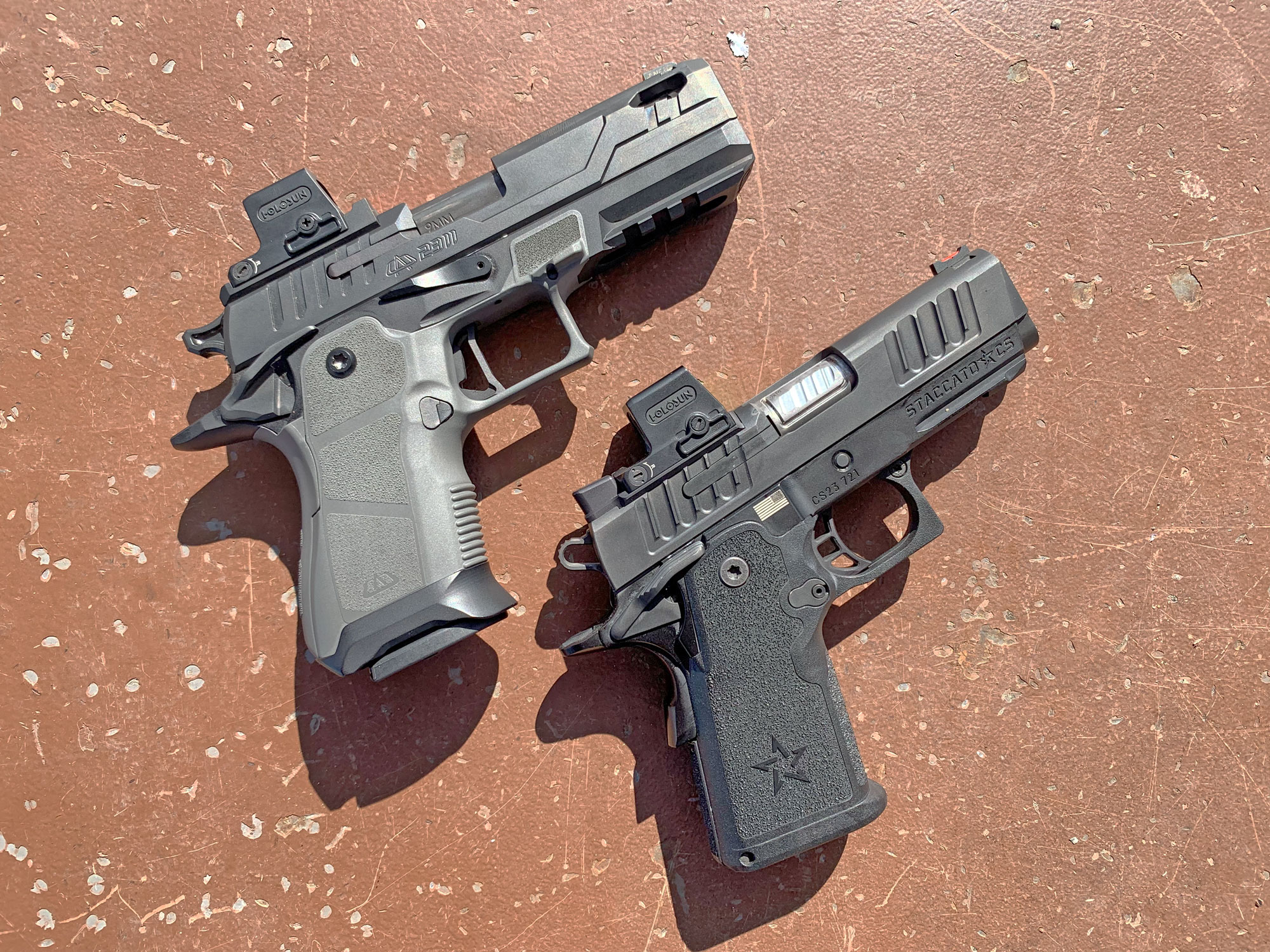
Magazines
The biggest distinction — and a major selling point — of the 2311 is that it uses the already popular Sig P320-pattern magazine. Most 2011-style pistols use the same magazine — a metal double-stack mag that bottlenecks to single-stack at the top. These mags can sometimes be finicky, and good 2311 magazines are expensive — about $70 each. The bottleneck design is necessary to funnel cartridges up into the relatively narrow frame. Some compact 2011 pistols like the Staccato CS are designed to accommodate a more compact magazine that’s similar to the Sig P365 X-Macro magazine in shape and proportion.
The popularity of the Sig P320 platform and adoption by the U.S. military ensures that the magazine market is well-supported. You can buy new Sig P320 mags for about $40, and quality aftermarket mags from Magpul at an even lower price.
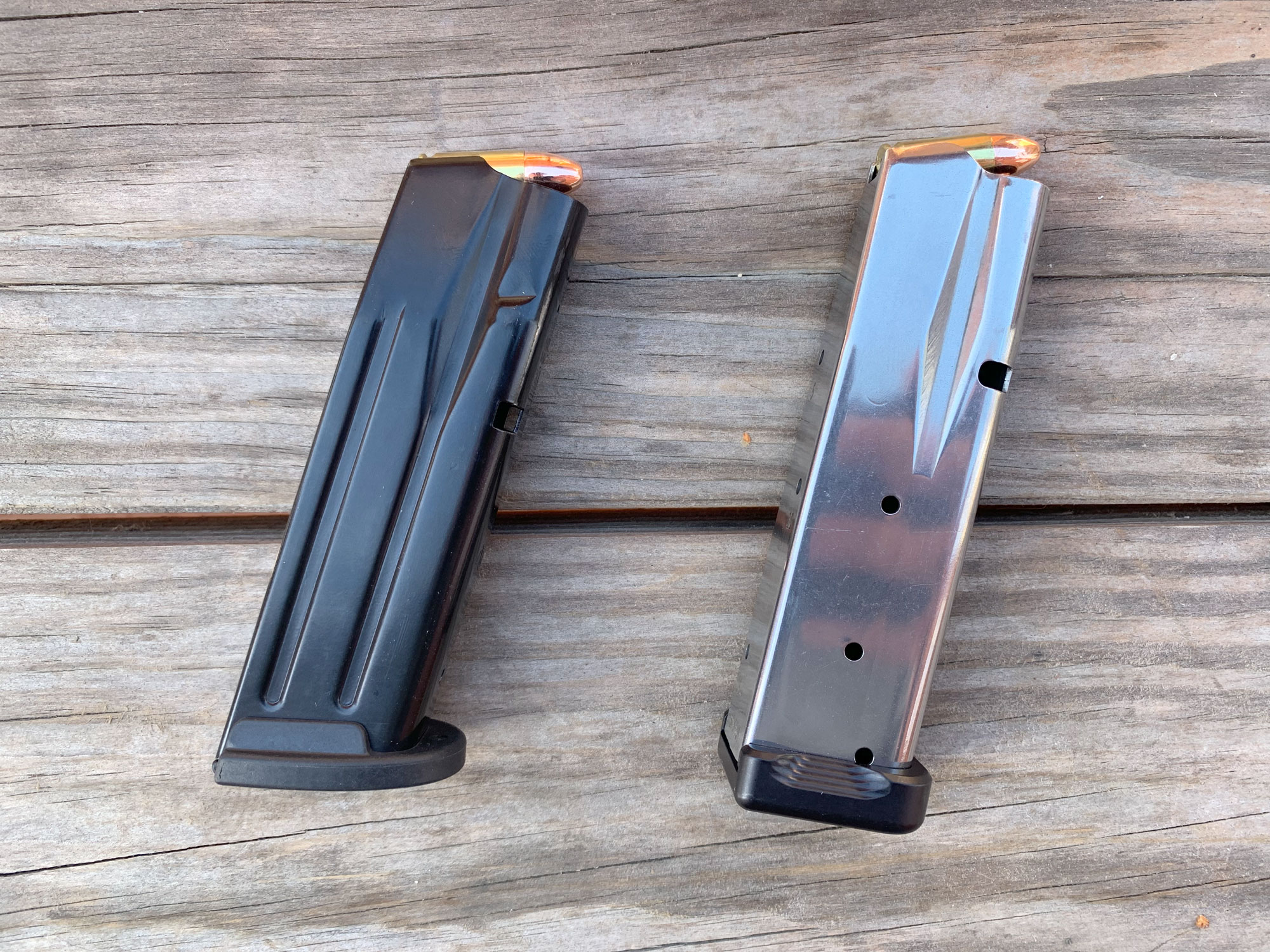
Grip Module
The Oracle Arms 2311 pistols have grip modules that are similar to 2011s in concept and attachment, but their features and ergonomics are quite different. The Oracle 2311 Compact Pro has a grip module that’s designed for some end-user customization. It has a grippy sandpaper-like texture, including textured patches above the thumb rests, but it’s subtle enough to allow for custom stippling. The pistol comes in a fully ambidextrous configuration, but a right-handed shooter could easily grind off the lefty thumb rest (and vice versa).
The grip on the 2311 is relatively thick back-to-front. It has a small hump, but the grip angle is similar to a 1911, 2011, or P320. Every shooter’s hand is different and, though I had no trouble shooting the 2311 Compact Pro well, I could have used a bit more material on the rear of the grip in the web of my hand.
The grip module is capped with an aluminum magwell that provides good traction for the pinky finger, but is otherwise pretty low-profile. The 15-round magazines flow in and out of it with little effort, and if you want to use larger 17-round magazines, you can swap for a larger magwell that will provide a flush fit with those.
No Grip Safety
A feature of the 1911 that many 2011-style pistols still use is the grip safety. Some shooters love it, some shooters hate it and pin them down, and some shooters don’t care either way. I think it was a good move to forego the grip safety on the Oracle 2311. The pistol still has an excellent ambidextrous thumb safety and generous beavertail at the rear of the frame.
Barrel/Recoil System
Most 2011-style pistols use barrels and recoil systems that carry on the 1911’s style. This means they often have 1911-style locking lugs, a pivoting barrel link, and a guide-rod/spring plug assembly to contain the recoil spring. The Staccato CS 2011 does use an ingenuitive captured recoil system, but it still has a spring plug at the end and uses the 1911-style barrel. The Oracle Arms 2311 Compact Pro is different.
The barrel that the Oracle uses is more similar to striker-fired designs. The front portion of the chamber locks up with the slide when in battery, and it has a fixed barrel link underneath. It uses a simple one-piece full-length guide rod and non-captured recoil spring that’s retained by the slide itself — not a spring plug. The barrel on the 2311 Compact Pro that I tested is ported, but non-ported models are available too.
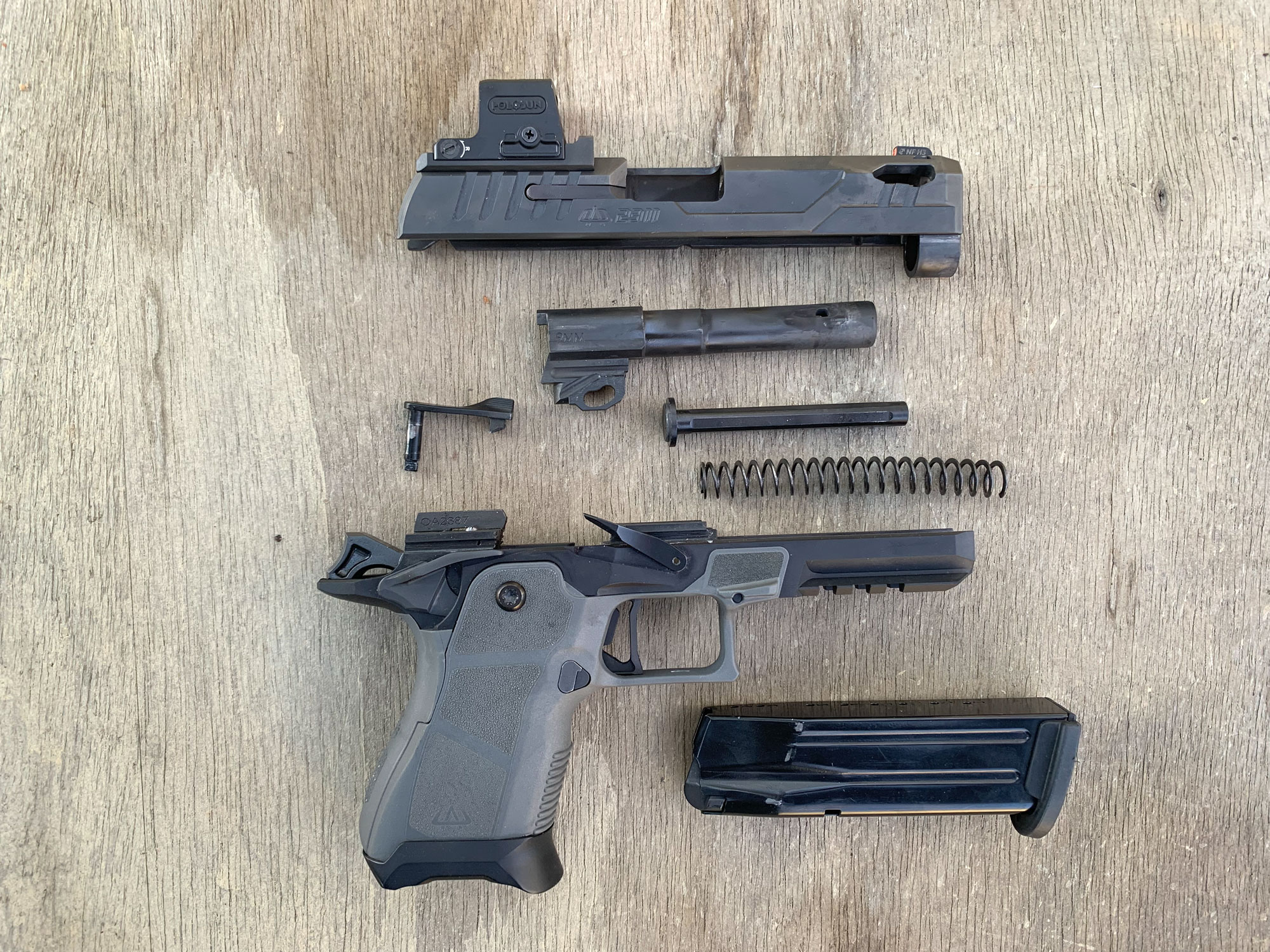
Controls
The Oracle Arms 2311 Compact Pro is adorned with slim but effective operating controls. Generally, the pistol’s grip and controls feel a bit sharp, but not obnoxiously so. It has a triangular magazine catch with a textured oversize button. To compliment the ambidextrous slide stop levers and safeties, this button is easily moved to the other side of the grip — something lefties will appreciate.
The slide stop is too far for me to reach with my right-hand thumb so, as with most 2011 pistols, I’ll actuate it with my support hand thumb or press the right-side lever down with my trigger finger to release the slide. The controls all fit well and the safety levers have no slop. The right-side slide stop lever has a bit of rotational play when not engaged, but I didn’t find it distracting.
The Oracle Arms 2311 Compact Pro, A Race Car Shooting Experience
Shootability is one of the biggest chasms that separates most striker-fired pistols from high-end 1911 and 2011-style guns. Sure, Dale Earnhardt (R.I.P.) could drop some jaws with grandma’s Buick, but he certainly could do better with a real race car. It’s no different with guns. Good shooters recognize and can exploit the advantages that better equipment gives them. Any shooter can benefit from using a gun that’s easier to shoot and generally, these guns are just that.
I found the 2311 Compact Pro to be incredibly flat-shooting, no doubt aided by the barrel ports, and the hotter the ammo, the better the porting worked. With a red dot, and even iron sights, I was able to stay on target through rapid-fire strings as well as any pistol I’ve ever fired. Shooting the Compact Pro alongside my Staccato CS, the ported barrel of the 2311 made muzzle flip even more manageable than the CS. The trigger is crisp with very little takeup or overtravel, and the reset is equally as short. With a good grip, you can pour the coals to it with this gun and your sights never leave the target.
Not only is this fun — of course it’s fun — it’s a potentially life-saving attribute for a concealed-carry gun — this variant’s primary role. The ability to shoot accurately, quickly, and stay on target is a great advantage for any potential self-defense scenario. Once you’re accustomed to a pistol that shoots this way it is tough to return to the realm of the average.
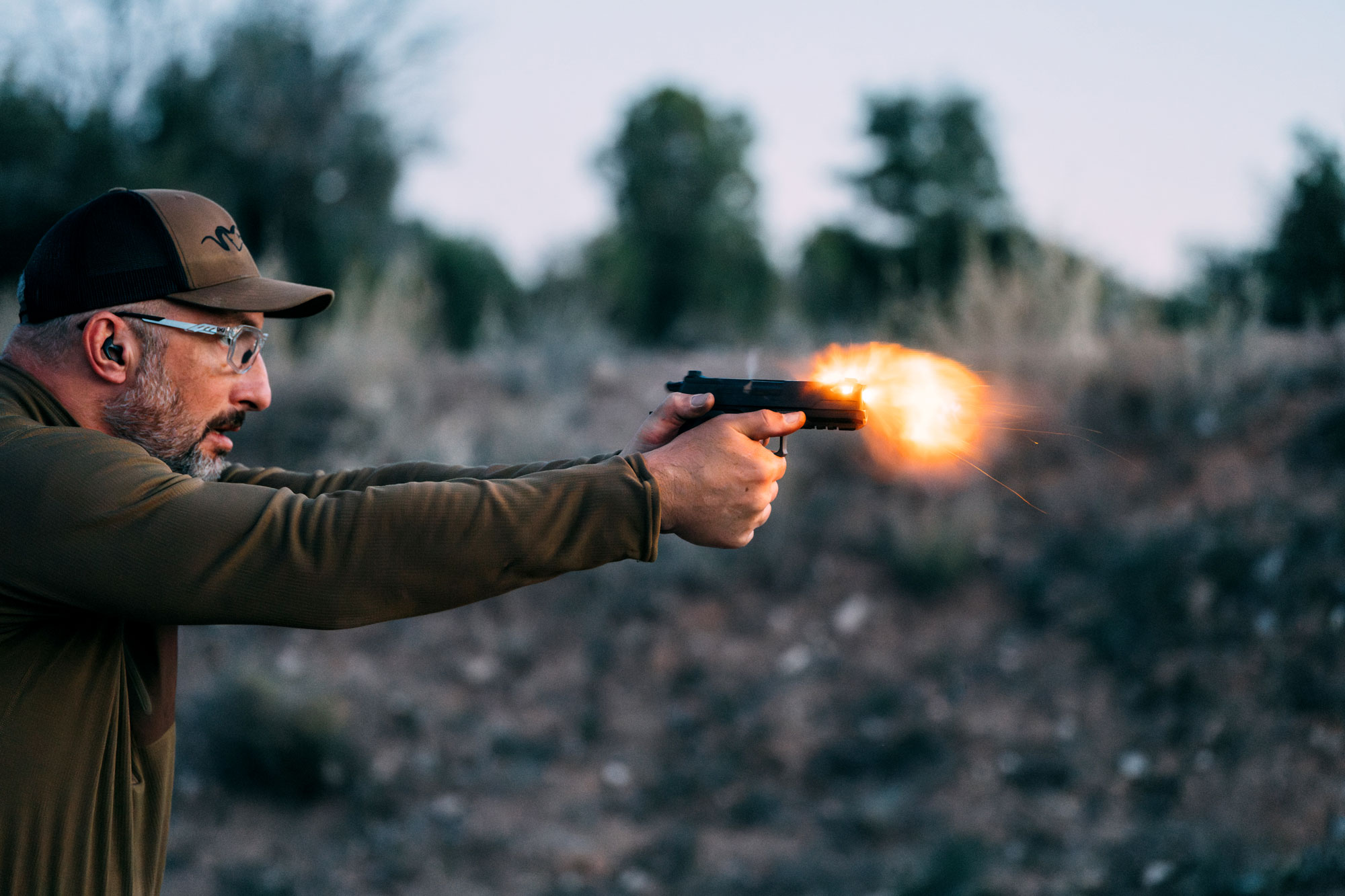
Accuracy
The Oracle Arms 2311 Compact Pro didn’t blow me away on accuracy. It’s perfectly adequate for defensive purposes, but it’s not going to win any bullseye matches. Across three types of premium defensive and match ammo, the pistol averaged 1.945-inch 5-shot groups from 15 yards. Per our handgun accuracy protocol, groups were fired standing, using a bagged tripod for support, and this pistol was tested with a Holosun EPS Carry optic.
| Ammo | Average 15-yd Group Size | Number of Groups Recorded |
| Hornady 135-gr +P Critical Duty | 2.176 inches | 4 |
| Remington Golden Sabre 124-gr +P | 1.955 inches | 3 |
| Staccato 125-gr Match HAP | 1.838 inches | 9 |
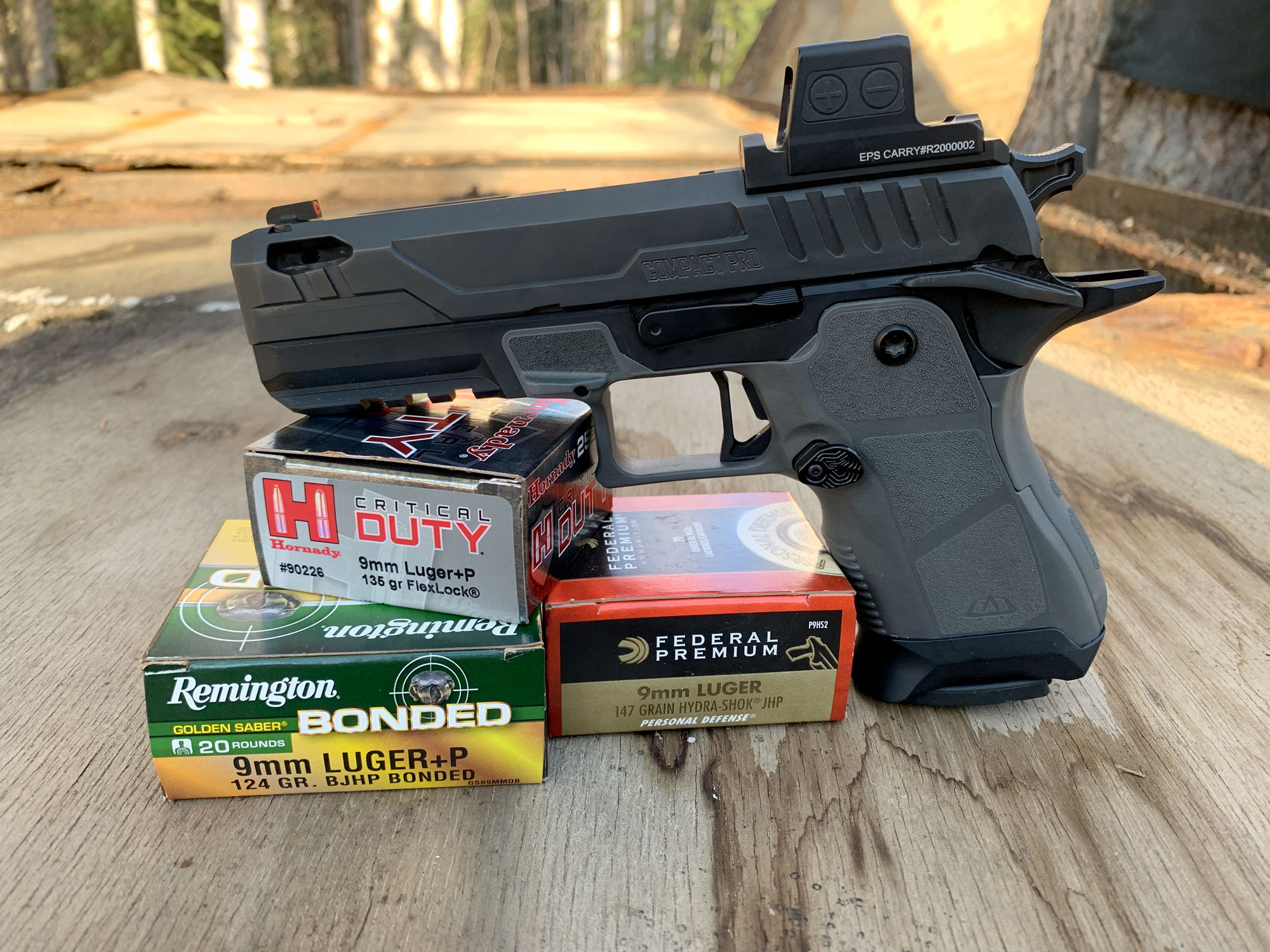
Reliability
I have high hopes for every gun I test — it takes a tremendous amount of time and ammo to test them thoroughly — and I was a bit disappointed with the reliability of the Oracle Arms 2311 Compact Pro. A $2,000 pistol should function perfectly, and many less-refined handguns do.
The 2311 Compact Pro is a tight-fitting gun, and I assumed it might need a break-in period to work the kinks out. When I started shooting it with bulk AAC 115-gr FMJ ammo, I immediately experienced repeated failures going into battery with a live round. A thump on the rear of the slide would lock it and I’d continue shooting. It was bad enough that I added more lubricant and switched to Hornady JHP ammo, and it seemed to be fine with that. After about 300 rounds, the pistol still didn’t like a couple types of ammo and would repeat the malfunction.
As I’ve spent more time shooting the pistol — I’ve fired close to 1,500 rounds at this point — the issue has subsided and it only happens with a couple types of ammo, on perhaps 1 or 2 out of 100 shots. Now it only occurs when racking the pistol or dropping the slide to chamber a round. I’ve watched the gun closely and have a couple observations and theories about what’s going on — all factors that contribute to a slower, less-smooth recoil and chambering cycle than guns like Staccatos have.
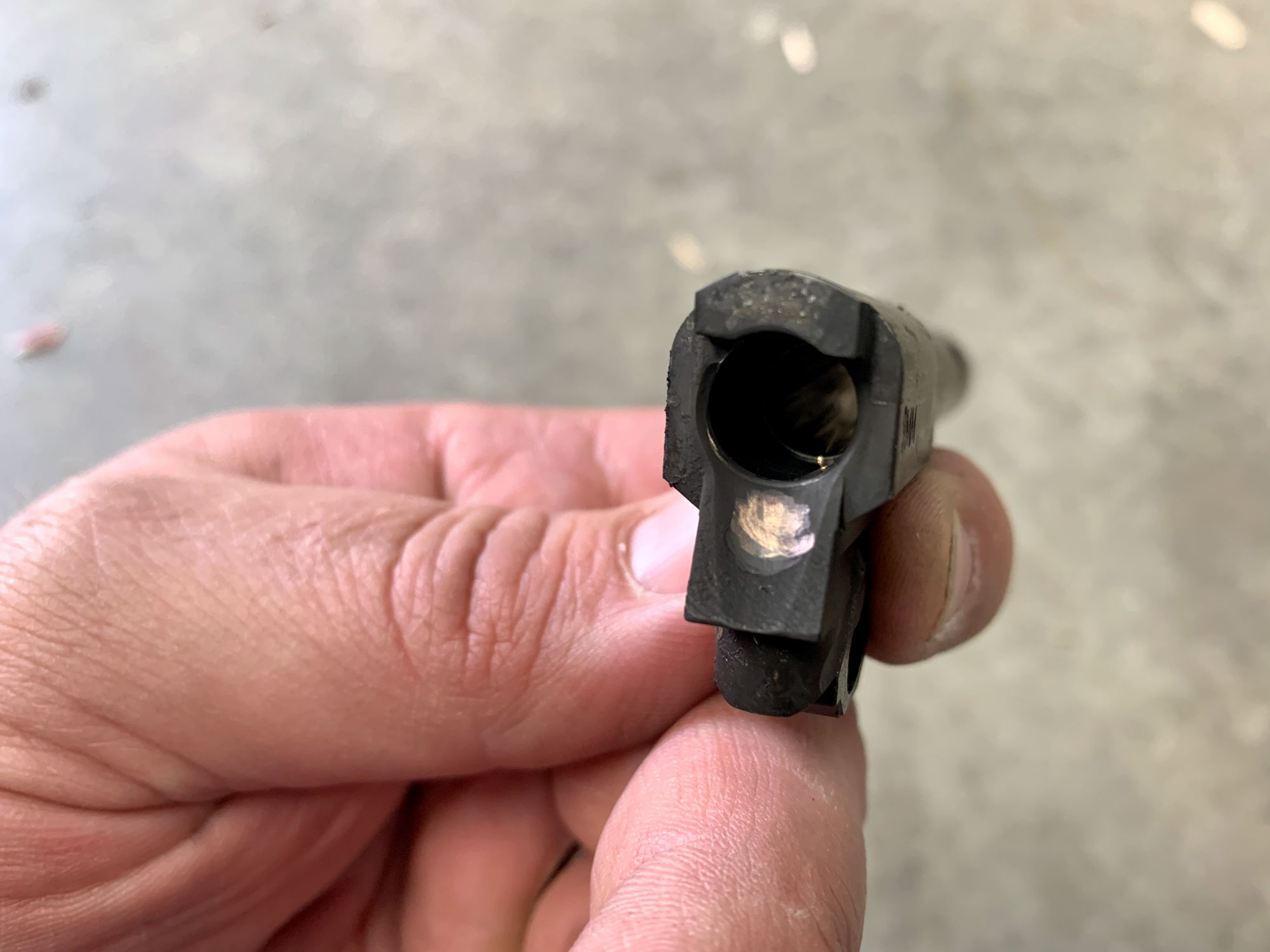
Cartridge Presentation
The most notable potential issue I see is how the magazine presents the cartridge to be loaded into the chamber. In this grip and frame, the P320 magazine holds the top cartridge at a fairly flat angle, pointing directly at the long, steep feed ramp. P320s using the same magazines, and my Staccato CS, position the top round so that it’s pointing at the chamber.
After lots of firing, the feed ramp on the Oracle has a noticeable amount of copper buildup from bullets skipping off it, up into the chamber. Most pistols show some feed-ramp contact, but it’s generally minimal. The 2311 Compact Pro doesn’t seem to deform hollow points on the feed ramp, but that little bit of contact is likely slowing the chambering down a bit.
Wear Patterns/ Slide-Barrel-Frame Fit
Another oddity that I noticed was an excessive amount of finish wear between the slide and barrel, and on the slide rails behind the disconnector. Some wear is normal, but not this much. After a shooting session, the chamber area of the barrel looks like it has finish wear, but it easily wipes away — it’s material from the slide rubbing off on the barrel, even when the pistol is well-lubricated. It’s not a concerning amount of wear, but it indicates some fitting issues. After nearly 3,000 rounds, my Staccato CS shows much less finish wear. I think that this contributes to the hesitancy of the slide to close on some ammunition, and it seems to have smoothed out over the last 500 rounds.
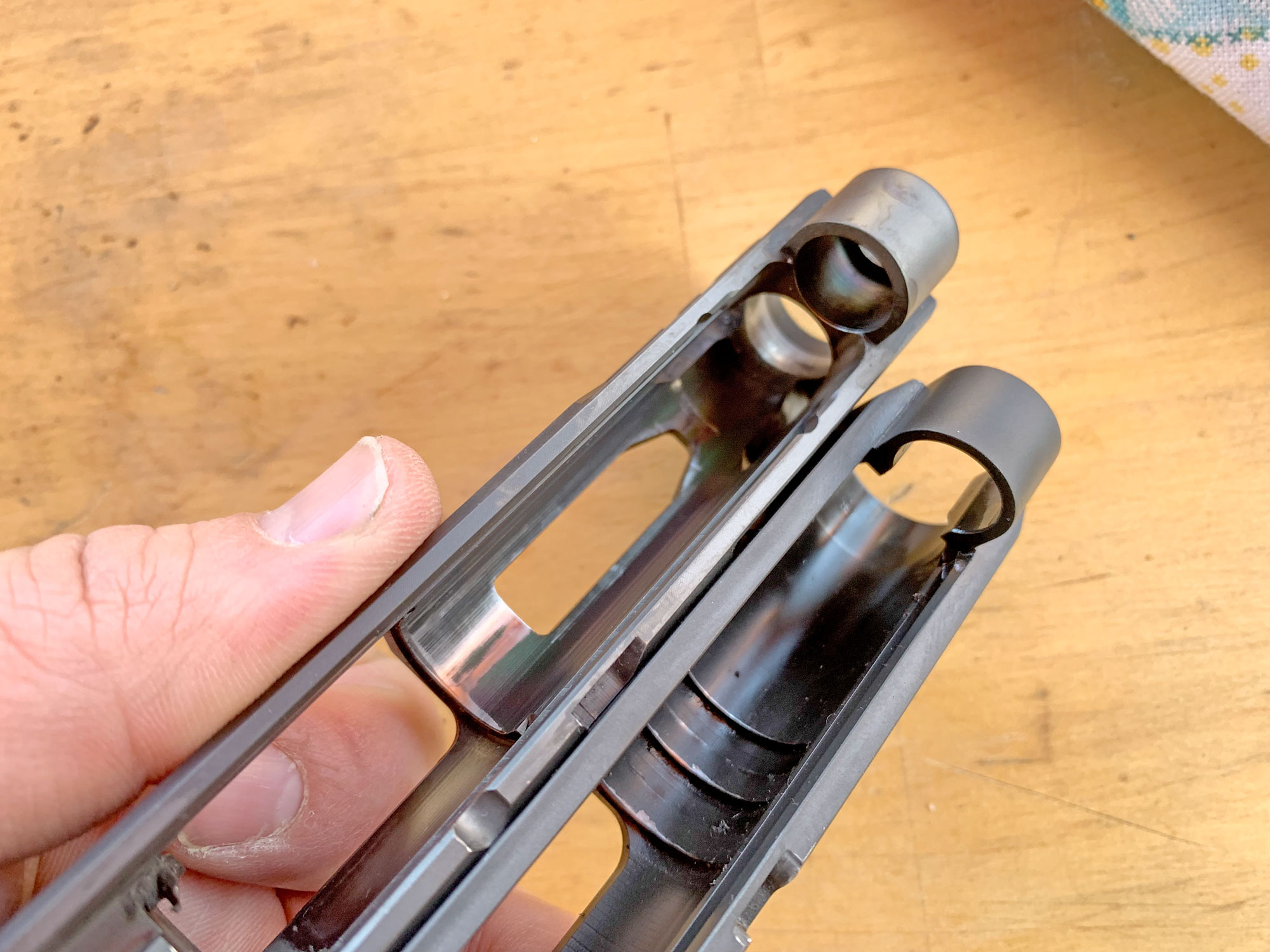
Stiff Disconnector
A minor thing, I did notice that the disconnector is a little stiff and gritty, and when slowly drawing the slide back, you can feel the resistance from it. A big deal? Probably not. But it might contribute.
A Clean Bill of Health
Though I’m not thrilled about the things described above, and wouldn’t be happy about that if I’d bought it off the rack, I don’t think it’s a deal-breaker for this gun. It’s an early production model and hopefully the folks at Oracle will get those kinks ironed out. Even so, on the last trip to the range, I fired 200 rounds of various types of ammunition (including ammo it would barely run before) and had no malfunctions at all. Cleaned and well-lubricated, it seems to have kicked the fever.
Things the Oracle Arms 2311 Compact Pro Does Well
The Oracle Arms 2311 Compact Pro is a high-speed modular design that can accommodate a lot of shooters. It’s got good ergonomics, ambidextrous controls, and a great optics system. It’s laser flat shooting and, for the price, it’s an excellent package with a full loadout of magazines, optic plates, sights, and case.
Where the Oracle Arms 2311 Compact Pro Could Be Better
For my personal preference, I’d like to see a less-humped grip. More importantly, I’d rather it not take a case of ammo to break the gun in and get it running smoothly.
FAQ
Prices vary per model, but the 2311 Compact Pro package sells for a little over $2,000
Oracle Arms 2311 pistols are made in Dayton, Nevada.
A 2311 is a pistol made by Oracle Defense (formerly Oracle Arms). It is a double-stack 1911-style pistol that features a 2011-style grip module that uses Sig P320-pattern magazines.
Final Thoughts
It’s always easy to write the glowing reviews of the star gun that did everything well. It’s not so easy to break down and interpret less-than-ideal performance from guns that you hoped would be perfect — and those are more common than you might think. Overall, I think that the Oracle Arms 2311 Compact Pro is a really cool gun that offers a fantastic shooting experience. The package presents a great value, and it’s a high-quality gun that can give the shooter a real advantage as a concealed-carry gun. That being said, I’m not impressed with taking hundreds of rounds to effectively break the gun in. I hope (and believe) that they can and will iron that out.
Read the full article here




